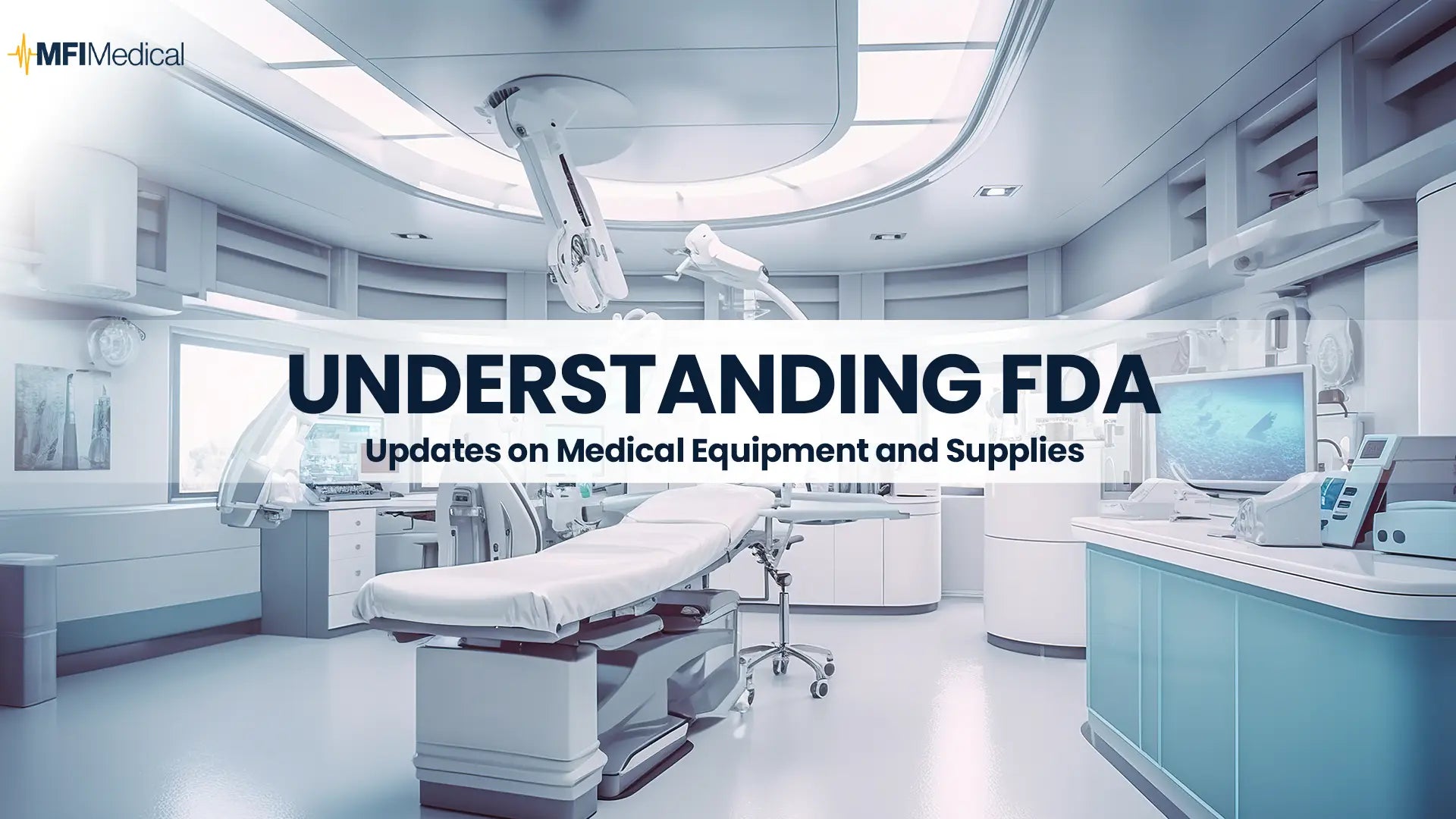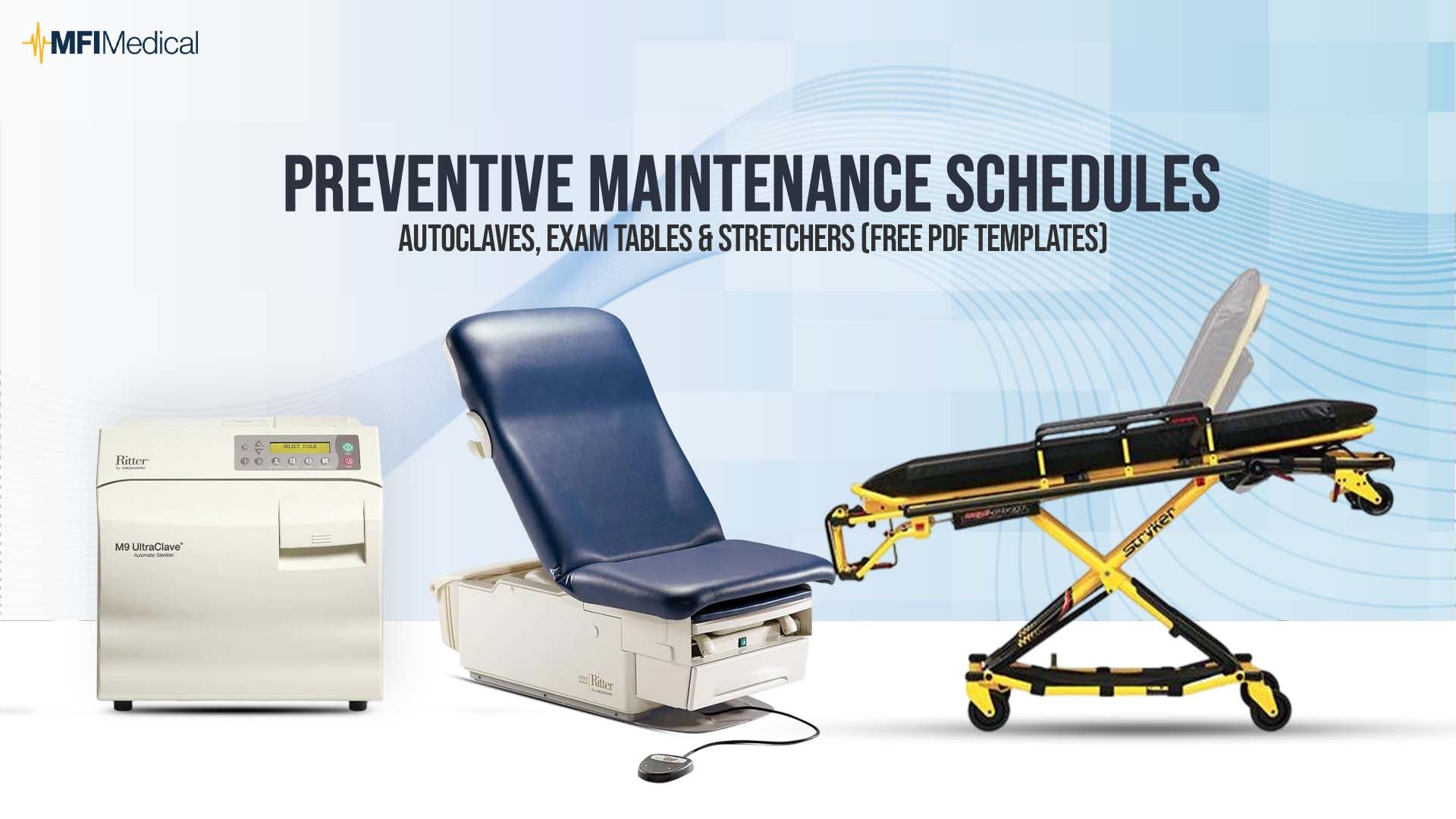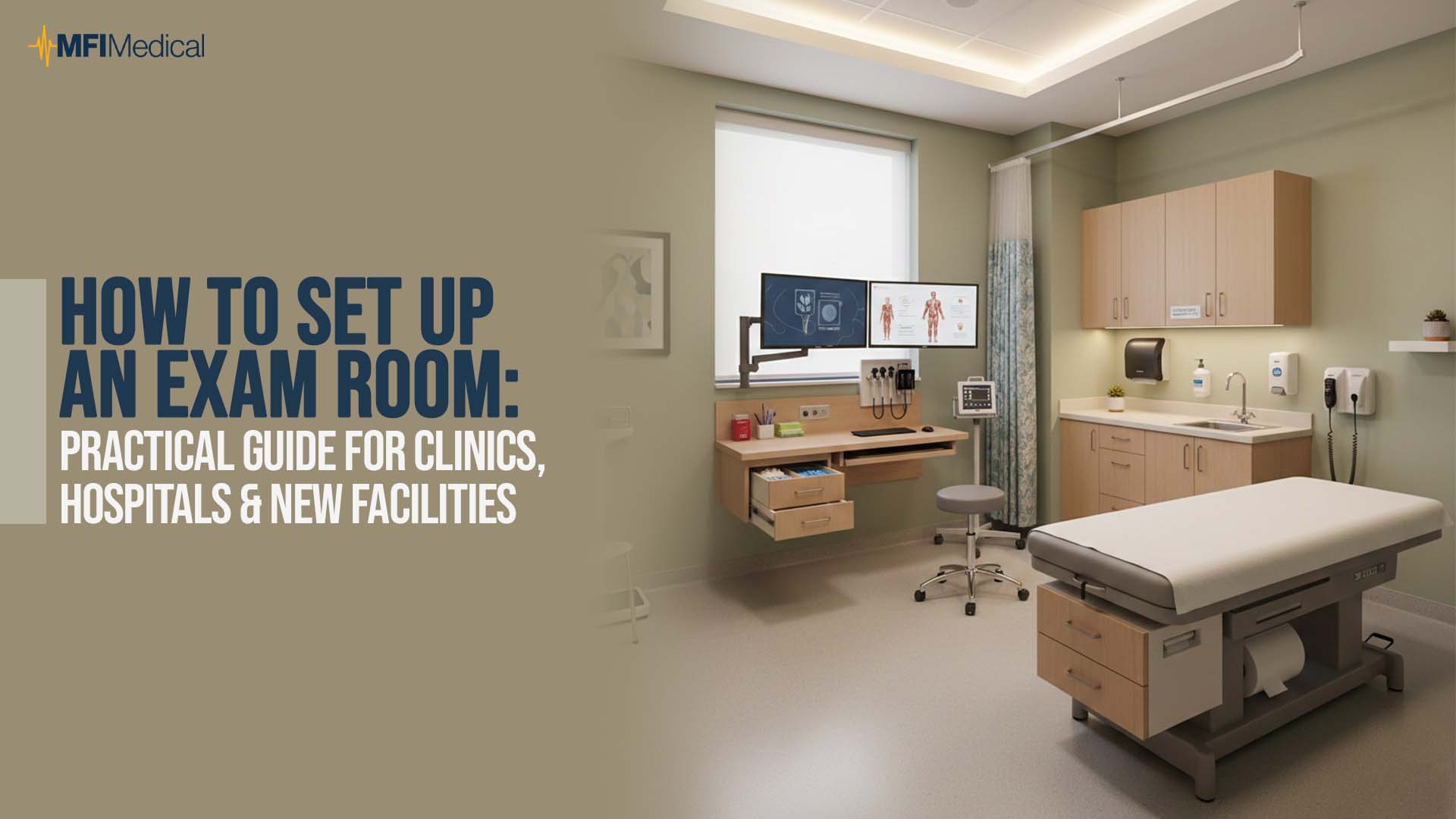If you sell, buy, or use medical equipment and supplies, keeping up with the FDA regulations isn’t optional—it’s essential. The healthcare industry is constantly evolving, especially as medical technology, artificial intelligence, and patient care protocols advance. The FDA plays a central role in ensuring that devices remain safe, effective, and accessible across diverse populations and use cases.
This blog breaks down recent FDA updates on medical devices as of 2024–2025, and what they mean for healthcare providers, buyers, and suppliers like us.
1. FDA Streamlines Approval for AI-Driven Devices
One of the most talked-about updates is the FDA’s evolving stance on artificial intelligence in medical devices. In December 2023, the FDA finalized a key guidance that allows developers to implement specific machine learning-driven modifications without needing to refile for full regulatory approval. These updates are allowed as long as the changes do not impact the safety or intended performance of the product.
This is significant because traditional approval timelines can delay innovation, especially in areas like AI-powered diagnostic software, where iterative updates improve clinical accuracy over time. This move supports continuous learning systems, such as imaging platforms that refine their models based on real-world feedback. Ultimately, the FDA’s approach encourages safe innovation while maintaining rigorous oversight.
2. New Standards for Sterilization
Ethylene oxide sterilization, long used for its effectiveness, is under increasing scrutiny due to its harmful emissions and potential cancer risk. In response, the FDA issued new guidelines in 2024 promoting vaporized hydrogen peroxide (VHP) as a viable alternative for sterilizing medical equipment.
VHP is safer for workers, reduces environmental harm, and maintains efficacy in sterilizing delicate instruments like endoscopes and catheters. This regulatory encouragement aligns with rising pressure from air quality compliance standards at the state and federal levels. For manufacturers and healthcare providers, adopting VHP sterilization methods is becoming not only a regulatory expectation but also a sustainability best practice.
3. Cybersecurity Rules Get Tougher
Modern devices such as wireless infusion pumps, wearable monitors, and cloud-based imaging systems are all potential targets for cyberattacks. Recognizing the growing risks, the FDA has updated its medical device cybersecurity guidance to require manufacturers to implement comprehensive security risk management plans from design through decommissioning.
This includes steps like vulnerability testing, patch deployment protocols, and post-market surveillance. It also shifts the burden to manufacturers to proactively manage and disclose cybersecurity weaknesses—raising the bar for secure innovation and protecting both patients and healthcare IT infrastructure.
4. Electronic Submissions Now the Standard
Gone are the days of paper-heavy applications. The FDA’s new eSTAR submission platform is now mandatory for most 510(k) submissions. This electronic, interactive template simplifies the process of submitting new devices for clearance by automatically flagging missing data, formatting issues, and inconsistencies before submission.
For regulatory affairs teams and developers, this transition improves efficiency, reduces administrative errors, and shortens the time to market. As part of the broader modernization of the medical device clearance process, eSTAR ensures transparency and uniformity, benefitting both the FDA and manufacturers.
5. Clinical Trial Diversity Requirements
The FDA now mandates the submission of Race and Ethnicity Diversity Plans during clinical trials for new devices. This requirement reflects a growing acknowledgment that medical technologies must be tested on populations representative of those who will use them.
Historically, many trials lacked inclusion across diverse racial, ethnic, and age groups—leading to devices that didn’t work equally well for all patients. This update ensures that inclusive medical research practices become a foundational part of device development. It’s also a step toward reducing disparities in health outcomes and increasing trust among underserved populations.
6. Real-World Evidence (RWE) Becomes Mainstream
In 2024, the FDA further embraced real-world evidence (RWE) by expanding how it can be used in device approvals. RWE refers to data collected outside traditional clinical trials—such as information from electronic health records (EHRs), insurance claims, and patient registries.
This approach provides a more dynamic, ongoing look at device safety and effectiveness in actual clinical environments. For low-risk devices or iterative improvements, RWE can often serve as sufficient support in place of new randomized controlled trials. Of course, real-world data quality still must meet FDA standards, but this flexibility accelerates access to critical technologies.
7. Alignment with International Quality Standards
The FDA is aligning more closely with ISO 13485, the global standard for medical device quality management systems. This alignment reduces the need for multiple audits across regulatory jurisdictions and encourages consistent manufacturing practices worldwide.
This is especially helpful for U.S. businesses that manufacture or distribute internationally. With fewer redundant inspections and greater clarity on global expectations, this shift promotes global quality system alignment—making it easier to enter markets in Europe, Canada, and Asia while maintaining FDA compliance.
8. Easier Malfunction Reporting
The Voluntary Malfunction Summary Reporting (VMSR) program allows qualified manufacturers to report device malfunctions in a summarized quarterly format, rather than detailing each event separately.
This streamlines compliance for high-volume products while maintaining transparency around potential safety issues. Devices under the VMSR must meet eligibility criteria, and manufacturers still need to report serious injuries or deaths immediately. But for routine issues, this policy reduces reporting burdens while upholding FDA device safety reporting requirements.
9. Clearer Rules on Servicing vs. Remanufacturing
A frequent gray area in medical device maintenance is the line between servicing and remanufacturing. In its recent guidance, the FDA clarified that if an activity changes a device’s intended use, performance specifications, or safety profile, it constitutes remanufacturing—and full compliance with manufacturing regulations is required.
This update protects patients by ensuring that significant alterations undergo proper evaluation. It also gives third-party service providers a clearer understanding of where regulatory boundaries lie, strengthening accountability and improving third-party device maintenance practices.
10. Lab-Developed Tests (LDTs) Under New Oversight
Lab-developed tests (LDTs), often used in pathology labs and genetic testing, were previously exempt from many FDA regulations. However, with growing reliance on LDTs for critical diagnoses, the FDA now plans to fully regulate them as medical devices.
This means labs must meet the same standards as commercial manufacturers, including validation, labeling, and adverse event reporting. The goal is to enhance the quality and consistency of diagnostic lab testing, particularly in high-impact areas like oncology, infectious disease, and prenatal screening.
Why This Matters for You
If you're a healthcare buyer, provider, or distributor, these updates affect the products you source and the standards you expect. For suppliers and manufacturers, they influence how you design, test, submit, and maintain medical equipment throughout its lifecycle.
At MFI Medical, we stay ahead of these evolving regulations so you don’t have to. Whether it’s a product with next-gen sterilization, enhanced cybersecurity, AI-powered diagnostics, or compliance with global manufacturing standards, we make sure every piece of equipment we offer meets current FDA compliance standards.
Shop FDA-Compliant Medical Equipment with Confidence
We offer a curated selection of high-quality medical devices and supplies, including diagnostic tools, surgical instruments, patient monitors, mobility aids, and much more. When you purchase through MFI Medical, you’re not just buying equipment—you’re investing in reliability, safety, and performance you can trust.
Browse our full medical equipment catalog and connect with our team to find the right FDA-compliant solutions for your needs.




